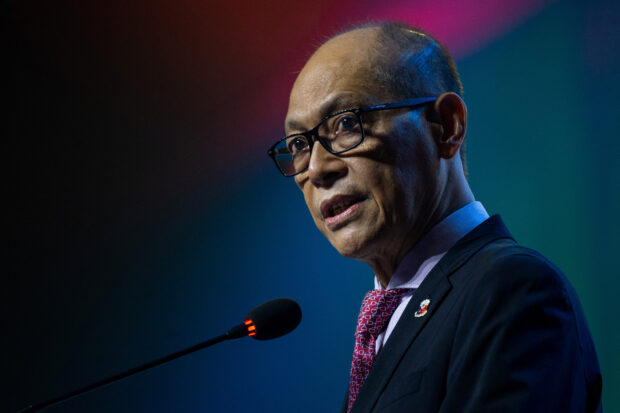MANILA -Even if President Bongbong Marcos has not yet signed the bill establishing the Maharlika investment fund (MIF), the rules needed to implement the new law are almost done, according to Finance Secretary Benjamin Diokno.
“The crafting of the IRR (implementing rules and regulations) started right after the approval of the MIF bill. It’s now in its final phase,” Diokno told reporters on Friday.
The Senate passed last May 31 Senate Bill No. 2020, which the House of Representatives subsequently adopted.
On June 3, finance officials said the MIF and the company that would manage it—Maharlika Investment Corp.—could be up and running within this year, as the bill is expected to be signed into law before the President’s State of the Nation Address (Sona) this July.
Maharlika bill up for Marcos signature; 19 bills on Sona ‘wish list’ pending
The bill provides that the Treasurer of the Philippines, in coordination with the founding GFIs (government financial institutions) of the MIF, will promulgate the IRR within 90 days of the MIF law taking effect.
High-impact infrastructure
The law will take effect immediately after publication in the Official Gazette or in a newspaper of general circulation in the country.
“We don’t intend to use up the 90 days,” Diokno said.
The Marcos administration had pushed hard for the establishment of the Maharlika fund as it believes it would accelerate investments in high-impact infrastructure and development projects.
Earlier, Budget Secretary Amenah Pangandaman said the MIF was cued to help bankroll the administration’s pipeline of 194 infrastructure flagship projects.
Maharlika to bankroll Marcos infra projects
P9-T pipeline
Tagged at a total cost of about P9 trillion, the pipeline consists mostly of projects related to physical connectivity or transportation, water resources (irrigation, water supply, and flood management), digital connectivity, health, power and energy, agriculture and other infrastructure.
Some examples are the Panay Railway Project, Mindanao Railway Project III, North Long Haul Railway, San Mateo Railway, UP-PGH Diliman Project, the Naia or Ninoy Aquino International Airport Rehabilitation Project, Ilocos Sur Transbasin Project and the Metro Cebu Expressway.
According to National Treasurer Rosalia de Leon, the implementing agencies will help identify the projects suitable for the MIF to get involved in.
De Leon said that, for funding, the MIF may approach multilateral lenders, international development agencies and sovereign wealth funds of other countries.
She added that, for infrastructure projects, the MIF may enter into joint ventures and co-investments, as well as issue bonds—not guaranteed by the government—to raise money.
The MIF bill also allows the Fund to invest in cash, foreign currencies, metals and other tradable commodities; domestic and foreign corporate bonds; listed or unlisted equities; Islamic investments such as Sukuk bonds; mergers and acquisitions; mutual and exchange-traded funds that are invested in underlying assets; real-estate infrastructure; and programs and projects on health, education and research and innovation.
‘Maharlika Fund listing to boost transparency’
-CSN
Read Next
Subscribe to INQUIRER PLUS to get access to The Philippine Daily Inquirer & other 70+ titles, share up to 5 gadgets, listen to the news, download as early as 4am & share articles on social media. Call 896 6000.
For feedback, complaints, or inquiries, contact us.
For all the latest Business News Click Here
For the latest news and updates, follow us on Google News.

